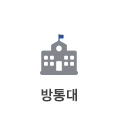목차
□ 제 목 : 상관연구(유아)
□ 총 페이지수 : 19
□ 목 차:
1.상관연구란
2.연구사례(유아의 인기도에 따른 스트레스 행동 연구)
3.목차(사례연구에 대한 목차입니다)
1)서론 - 연구의필요성과 목적
- 연구문제
2)이론적 배경 - 유아의 또래간 인기도
- 유아의 스트레스 행동
- 유아의 또래관계와 스트레스 행동
3)연구방법 연구대상
연구도구
연구절차
자료분석
4)연구결과 및 해석
5)논의 및 결론
*한글2002로 작성하였습니다.한글97에서는 보이지 않습니다.
님이 요청하신 자료와 같은 요청이 몇번인가 올라온것을 보고 응답하기
위해 자료를 찾아보았으나 제가 유아교육에 문외한인 이유로
찾기가 쉽지 않았습니다.
이자료를 올리면서 조금 공부도 하였습니다.
이자료가 님이 원하시는것과 꼭 맞지 않을지도 모릅니다.
레포트용으로 작성하지는 않았으니 님이 손을 조금 보셔야 할겁니다.
이자료가 도움이 되었으면 합니다.
이자료를 찾으면서 많은 유아교육에 관한 자료를 모았습니다......
님덕분에 제가 공부를 했군요.
□ 총 페이지수 : 19
□ 목 차:
1.상관연구란
2.연구사례(유아의 인기도에 따른 스트레스 행동 연구)
3.목차(사례연구에 대한 목차입니다)
1)서론 - 연구의필요성과 목적
- 연구문제
2)이론적 배경 - 유아의 또래간 인기도
- 유아의 스트레스 행동
- 유아의 또래관계와 스트레스 행동
3)연구방법 연구대상
연구도구
연구절차
자료분석
4)연구결과 및 해석
5)논의 및 결론
*한글2002로 작성하였습니다.한글97에서는 보이지 않습니다.
님이 요청하신 자료와 같은 요청이 몇번인가 올라온것을 보고 응답하기
위해 자료를 찾아보았으나 제가 유아교육에 문외한인 이유로
찾기가 쉽지 않았습니다.
이자료를 올리면서 조금 공부도 하였습니다.
이자료가 님이 원하시는것과 꼭 맞지 않을지도 모릅니다.
레포트용으로 작성하지는 않았으니 님이 손을 조금 보셔야 할겁니다.
이자료가 도움이 되었으면 합니다.
이자료를 찾으면서 많은 유아교육에 관한 자료를 모았습니다......
님덕분에 제가 공부를 했군요.
본문내용
psychology, 48, 257-67.
Vosk, B., Forehnd, R., Parker. J. B. & Richard. K. A.(1982). Multimethod comparision of popular and unpopular children. Developmental psychology, 18, 571-75.
Warm, R.(1984). Improving stress-related behavioral indicators in the preschool classroom through prevention and intervention. ERIC Document No. ED. 307 049.
Zimiles, H.(1986). The social context of early childhood in arers of expanding preschool education. In B. Spodek.(Eds). Today\'s kindergarten: explring the knowledge base, expanding the curriculum. New York: Teacher College Press.
THE STUDY ON STRESS BEHAVIORS OF CHILDREN BY SOCIOMETRIC STATUS
Oh, Young-hee Ohm, Jung-ae
The purpose of this study is to find the differences of the stress behaviors of children by their sociometric status, and to find the differences in stress benviors between popular children and unpopular children by types of their classroom activities in the kindergarten.
For such purpose of study, the following questions have been made:
1. Is there any difference in the stress behaviors of the children by their sociometric status?
2. Is there any difference in the stress behaviors of popular children and unpopular children by types of their class activities in the kindergarten?
The subjects of this study are 40 children consisting of 20 popular children (each 10 of boys and girls) and 20 unpopular children (each 10 of boys and girls) selected through two times of popularity test, out of 67 children of two 5-year classes in the kindergarten located in \"A\" city, Kyungki-do, Korea to which the children in middle or higher classes attend.
As a studying took, the peer rating scale created by Asher et al. (1979) for measuring the sociometric status of the children has been used, and the Classroom child Stress Behavior Instruction(CCSBI) created by Burts et al. for observing the stress behaviors of children. Based on the observed data, the frequency, percentage and correlation have been gainded using the t-test.
The results of this study are shown as follows:
1. There is meaningful difference by sociometric status in the stress behaviors of children. Unpopular children group shows the whole stress behaviors much more than the popular children group. Thus, it is notably different that the passive stress behaviors, self-with-self stress behaviors, self-with-others stress behaviors and self-with object stress behaviors are shown more in the unpopular children group than the popular children group.
2. The difference between the stress behaviors of popular children and unpopular children by types of the classroom activities is shown notably in the individual group activities and small group activities led by the children, and the whole group activities led by a teacher. In detail, attentive differences are shown between the stress behaviors of the popular group and unpopular group through free choice time, transfer time, story telling time, sing a song time, listening to music time and game time.
Vosk, B., Forehnd, R., Parker. J. B. & Richard. K. A.(1982). Multimethod comparision of popular and unpopular children. Developmental psychology, 18, 571-75.
Warm, R.(1984). Improving stress-related behavioral indicators in the preschool classroom through prevention and intervention. ERIC Document No. ED. 307 049.
Zimiles, H.(1986). The social context of early childhood in arers of expanding preschool education. In B. Spodek.(Eds). Today\'s kindergarten: explring the knowledge base, expanding the curriculum. New York: Teacher College Press.
THE STUDY ON STRESS BEHAVIORS OF CHILDREN BY SOCIOMETRIC STATUS
Oh, Young-hee Ohm, Jung-ae
The purpose of this study is to find the differences of the stress behaviors of children by their sociometric status, and to find the differences in stress benviors between popular children and unpopular children by types of their classroom activities in the kindergarten.
For such purpose of study, the following questions have been made:
1. Is there any difference in the stress behaviors of the children by their sociometric status?
2. Is there any difference in the stress behaviors of popular children and unpopular children by types of their class activities in the kindergarten?
The subjects of this study are 40 children consisting of 20 popular children (each 10 of boys and girls) and 20 unpopular children (each 10 of boys and girls) selected through two times of popularity test, out of 67 children of two 5-year classes in the kindergarten located in \"A\" city, Kyungki-do, Korea to which the children in middle or higher classes attend.
As a studying took, the peer rating scale created by Asher et al. (1979) for measuring the sociometric status of the children has been used, and the Classroom child Stress Behavior Instruction(CCSBI) created by Burts et al. for observing the stress behaviors of children. Based on the observed data, the frequency, percentage and correlation have been gainded using the t-test.
The results of this study are shown as follows:
1. There is meaningful difference by sociometric status in the stress behaviors of children. Unpopular children group shows the whole stress behaviors much more than the popular children group. Thus, it is notably different that the passive stress behaviors, self-with-self stress behaviors, self-with-others stress behaviors and self-with object stress behaviors are shown more in the unpopular children group than the popular children group.
2. The difference between the stress behaviors of popular children and unpopular children by types of the classroom activities is shown notably in the individual group activities and small group activities led by the children, and the whole group activities led by a teacher. In detail, attentive differences are shown between the stress behaviors of the popular group and unpopular group through free choice time, transfer time, story telling time, sing a song time, listening to music time and game time.
추천자료
 유아발달심리학의 역사와 연구동향 및 연구방법
유아발달심리학의 역사와 연구동향 및 연구방법 유아의 운동과 성장발달 연구
유아의 운동과 성장발달 연구 유아 패턴 연구 인식
유아 패턴 연구 인식 <연구계획서> 이성교제와 학업성취도의 상관관계 조사
<연구계획서> 이성교제와 학업성취도의 상관관계 조사  유아과학교육의 목적과 연구 동향
유아과학교육의 목적과 연구 동향 유아수학교육의 중요성과 유아 수학교육의 목적과 연구동향
유아수학교육의 중요성과 유아 수학교육의 목적과 연구동향  유아 행동 사례 연구
유아 행동 사례 연구  [PPT, 발표發表자료]뇌 연구의 필요성과 미술치료의 상관관계, 미술치료와 뇌연구, 뇌와 미술...
[PPT, 발표發表자료]뇌 연구의 필요성과 미술치료의 상관관계, 미술치료와 뇌연구, 뇌와 미술... 영유아 프로그램의 최근연구동행 중 가드너의 다중이론에 대해 서술하고 다중지능이론이 반영...
영유아 프로그램의 최근연구동행 중 가드너의 다중이론에 대해 서술하고 다중지능이론이 반영... [아동 관찰 및 행동연구 ] 유아문제 행동의 이해 및 지도 - 공격적인 행동의 지도
[아동 관찰 및 행동연구 ] 유아문제 행동의 이해 및 지도 - 공격적인 행동의 지도 [아동관찰 및 행동연구] 유아 ‘자연놀이’에 관한 참여관찰 연구
[아동관찰 및 행동연구] 유아 ‘자연놀이’에 관한 참여관찰 연구 [아동관찰및행동연구] 유아반 자유선택활동의 각 영역에서 통합적 연계의 중요성과 통합적 연...
[아동관찰및행동연구] 유아반 자유선택활동의 각 영역에서 통합적 연계의 중요성과 통합적 연... [아동관찰및행동연구]유아반 자유선택활동의 각 영역에서 통합적 연계의 중요성과 통합적 연...
[아동관찰및행동연구]유아반 자유선택활동의 각 영역에서 통합적 연계의 중요성과 통합적 연... [아동관찰및행동연구] 영유아의 놀이행동을 분석하고, 실내외 흥미영역에서의 영유아 관찰사...
[아동관찰및행동연구] 영유아의 놀이행동을 분석하고, 실내외 흥미영역에서의 영유아 관찰사...







































소개글